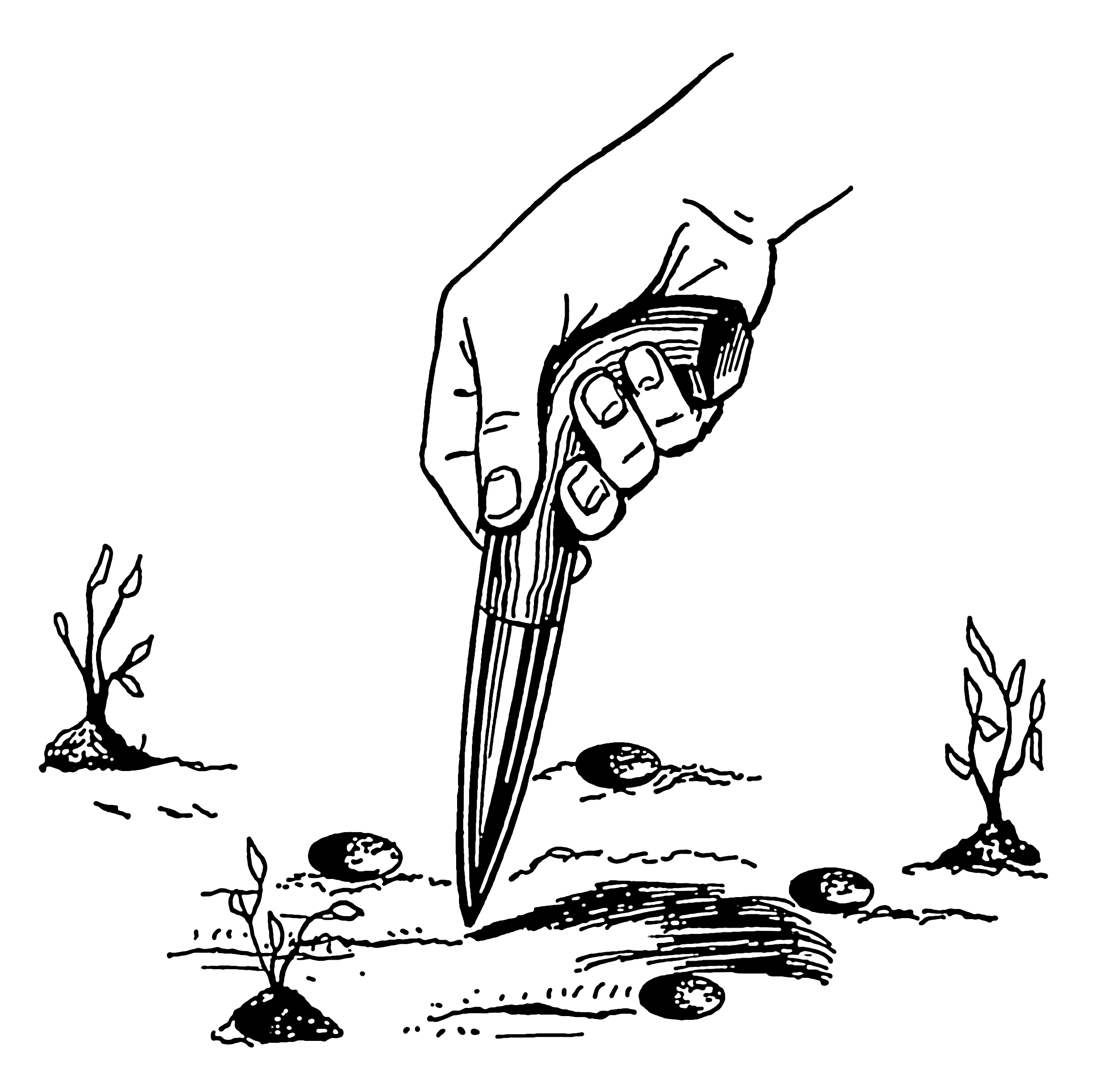dibber on:
[Wikipedia]
[Google]
[Amazon]
 A dibber or dibble or dibbler is a pointed wooden stick for making holes in the ground so that seeds, seedlings or small bulbs can be planted. Dibbers come in a variety of designs including the straight dibber, T-handled dibber, trowel dibber, and L-shaped dibber.
A dibber or dibble or dibbler is a pointed wooden stick for making holes in the ground so that seeds, seedlings or small bulbs can be planted. Dibbers come in a variety of designs including the straight dibber, T-handled dibber, trowel dibber, and L-shaped dibber.

 This dibber is much like the classic dibber, but with a T-grip that fits in the palm to make it easier to apply
This dibber is much like the classic dibber, but with a T-grip that fits in the palm to make it easier to apply
Antique Farm Tools
* {{Commons category, Dibbles Gardening tools Farming tools
 A dibber or dibble or dibbler is a pointed wooden stick for making holes in the ground so that seeds, seedlings or small bulbs can be planted. Dibbers come in a variety of designs including the straight dibber, T-handled dibber, trowel dibber, and L-shaped dibber.
A dibber or dibble or dibbler is a pointed wooden stick for making holes in the ground so that seeds, seedlings or small bulbs can be planted. Dibbers come in a variety of designs including the straight dibber, T-handled dibber, trowel dibber, and L-shaped dibber.
History
The dibber was first recorded in Roman times and has remained mostly unchanged since. In the eighteenth and nineteenth centuries, farmers would use long-handled dibbers of metal or wood to plant crops. One person would walk with a dibber making holes, and a second person would plant seeds in each hole and fill it in. It was not until theRenaissance
The Renaissance ( , ) , from , with the same meanings. is a period in European history marking the transition from the Middle Ages to modernity and covering the 15th and 16th centuries, characterized by an effort to revive and surpass ide ...
that dibbers became a manufactured item, some made of iron for penetrating harder soils and clay.
Straight dibber
This is the classic dibber. It is anything from a sharpened stick to a more complicated model incorporating a curved handle and pointed steel end. It may be made of wood, steel or plastic.T-handled dibber
torque
In physics and mechanics, torque is the rotational equivalent of linear force. It is also referred to as the moment of force (also abbreviated to moment). It represents the capability of a force to produce change in the rotational motion of th ...
. This allows the user to exert even pressure, creating consistent hole depth.
Trowel dibber
This dibber combines the features of a dibber and a trowel. It is usually forged fromaluminum
Aluminium (aluminum in American and Canadian English) is a chemical element with the symbol Al and atomic number 13. Aluminium has a density lower than those of other common metals, at approximately one third that of steel. It ha ...
or other lightweight material. One end is for dibbing, and the other end is shaped like a trowel.
In popular culture
British comedian Lee Mack donated a T-handled dibber to theBritish Lawnmower Museum
The British Lawnmower Museum is a museum dedicated to the history of the lawnmowers in Southport, Merseyside, northern England.
The museum has over 300 restored exhibits of garden machinery from over the last 200 years, as well as a collection ...
, Southport, and spoke about it on the panel game show '' Would I Lie to You?'' (Series six, Episode three, first broadcast 27 April 2012).
In military parlance an aircraft-dropped 'dibber bomb' is an anti-runway penetration bomb
Anti-runway penetration bombs are systems involving bombs or bomblets designed to disrupt the surface of an airfield runway and make it unusable for flight operations.
Perhaps the most strategically decisive, best known, and first wartime use o ...
which destroys runways by first penetrating below the tarmac before exploding, cratering, and displacing the surface, making repairs difficult and time consuming, during which conventional airplanes can neither land nor take off.
See also
*Pottiputki (tool)
Pottiputki is a planting tool that was created by Tapio Saarenketo in the early 1970s, used for manual planting of containerized seedlings. The planters can work in an ergonomically correct position while maintaining high productivity, making the ...
References
Sources and external links
*William Bryant Logan, ''Smith & Hawken The Tool Book'', 1997Antique Farm Tools
* {{Commons category, Dibbles Gardening tools Farming tools